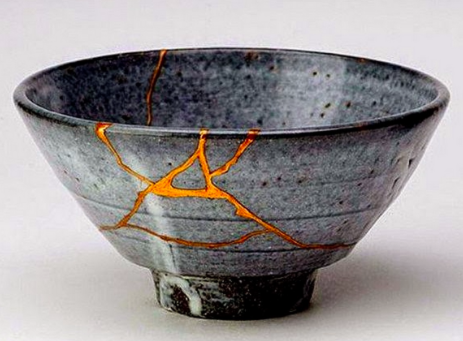blessed and broken: the week after easter
It's a few days after the resurrection and, as Jesus is walking down the road to Emmaus, he catches up with two men who are walking together, discussing the recent events in Jerusalem, asking questions about the Messiah. Jesus walks with them, enters into their conversation, and answers their questions. They invite him to dinner. And when he stands and blesses the bread and then breaks it — they recognize him. And then he disappears.
They recognize Jesus not because of his resurrected, indestructible body. Not because he has the answers to all of their questions. They recognize him in the breaking.
There’s something about the resurrection that shines through the brokenness and the men see Jesus in a way they couldn’t see him before.
I thought about this in Togo, when I was touching brokenness — metaphorically and literally. I was in the least happy country in the world, witnessing a broken political system, a broken infrastructure, a broken economy. And I was literally touching broken bodies — bleeding wounds, broken bones, cracked teeth and nails and skin.
And somehow in that darkness, in the “least-happy”-ness and in the pain, Jesus showed up there in a way I had never seen Jesus before.
Somehow, in the rooms of the dying, as I held their hands and witnessed their last breaths, there was a Presence in the room I had never felt before.
Suddenly, I understood Leonard Cohen’s words: “There’s a crack in everything. That’s how the light gets in.”
And Rumi’s line: “The wound is the place where the light enters.”
The Japanese express this in an art form called Kintsugi, where pottery is purposefully broken, and the cracks are repaired with laquer dusted with silver, gold or platinum. A piece of pottery that is cracked and repaired with gold is more valuable than pottery that has never been broken.

In P.A. school, the pediatrics professor taught us never to lie to children. If you’re going to give them a shot and they ask if it will hurt, a lot of us want to say, “No” so the child will cooperate better and not dread the coming pain. You can deal with the emotional reaction after the shot is completed and you no longer have a sharp object in your hand.
But if you lie to a child about pain, you will break their trust, and they won’t trust you again.
So, before giving shots or doing painful procedures, I tell my patients of all ages, “This is going to hurt.” And then I inflict the pain as quickly as possible, because the anticipation of pain is almost worse than the pain itself.
To me, the most beautiful part of Jesus breaking the bread is that before he breaks it, before he tears it apart, before he rends the loaf, he blesses it.
He blesses it as if to say, “This will hurt, but you can trust me. Because I’m doing this for your good. Because I am good.” And, as it is broken, the bread becomes holy. It goes from sustenance to sacrament, from banal to beautiful, from whole to holy.
I think human beings are like that bread.
As we go through life, we inevitably become broken (Trust me, I have lived this truth over the past two weeks.) It is an unavoidable, irrefutable fact of life: it will hurt. And, as William Goldman wrote in The Princess Bride, “Anyone who says differently is selling something.”
Paul writes,
We have this treasure in jars of clay to show this all-surpassing power is from God and not from us.
We are hard pressed on every side, but not crushed;
perplexed, but not in despair;
persecuted, but not abandoned;
struck down, but not destroyed.
We always carry around in our body the death of Jesus,
so that the life of Jesus may also be revealed in our body.
For we who are alive are always being given over to death for Jesus' sake,
so that his life may also be revealed in our mortal body.
We mortals are Kintsugi pottery, God’s art form. Our bodies and our souls and our hearts break as we go through life. The promise we have from God is not that we won’t break, but that when we do, God will redeem the brokenness — or, in the words of Romans 8:28, work all things for good.
And God doesn’t just put us back together, like the King’s Men trying to reassemble Humpty Dumpty after he fell off the wall. God puts us together like a Kintsugi pottery master — carefully, artfully, beautifully — with extravagant, expensive, glimmering grace.
As you walk into this post-Easter world, remember that God brought you into the world with love. He holds you and speaks a blessing over you. And then he will allow you to be broken. And as God redeems your pain, you will be transformed.

From an ordinary jar of clay to priceless Kintsugi pottery.
From bread to sacrament.
From ashes to beauty.
From death to never-ending Life.